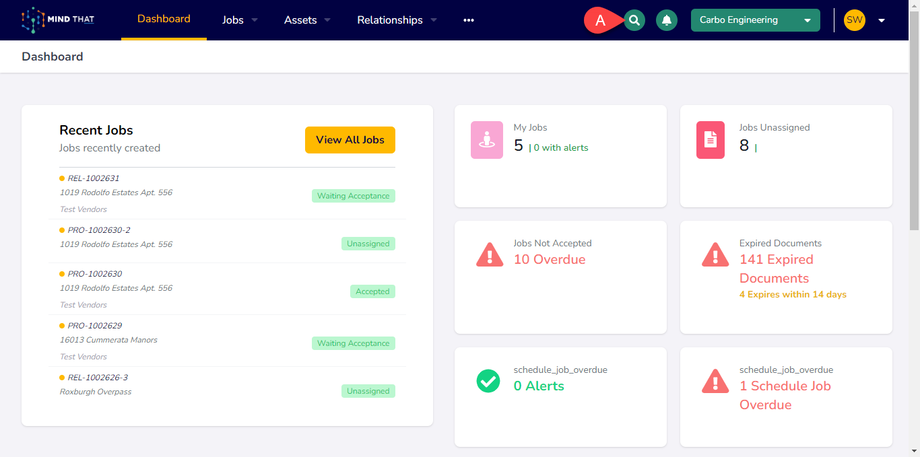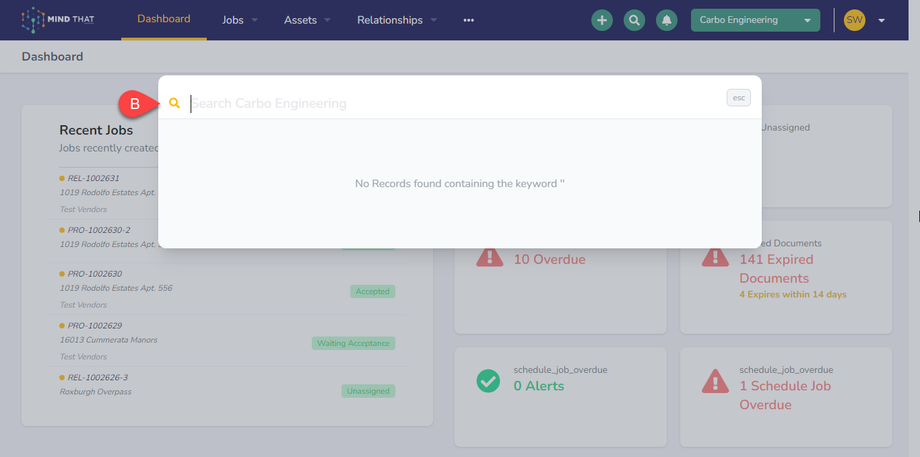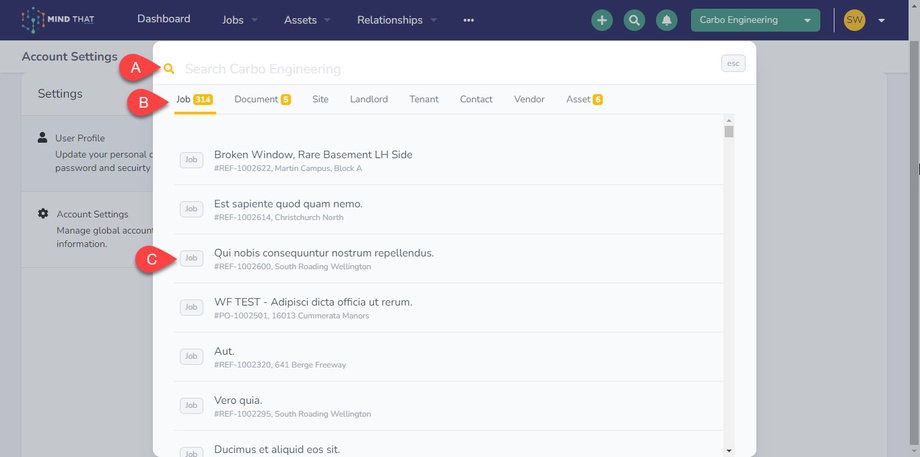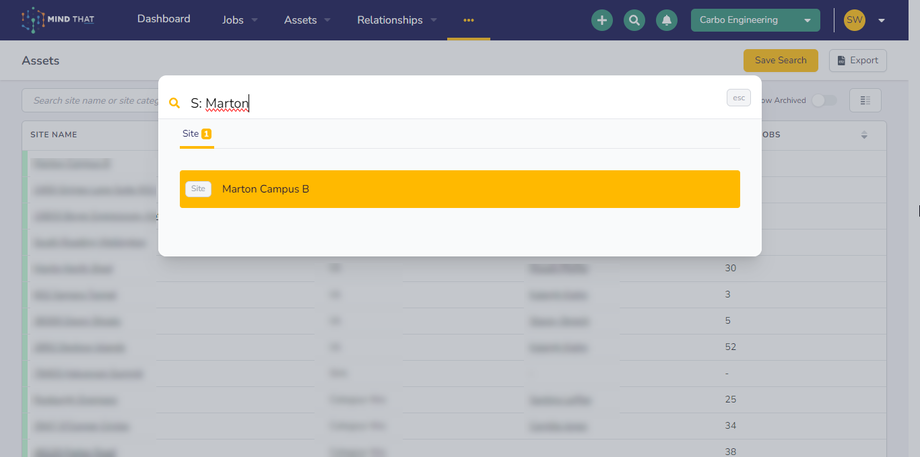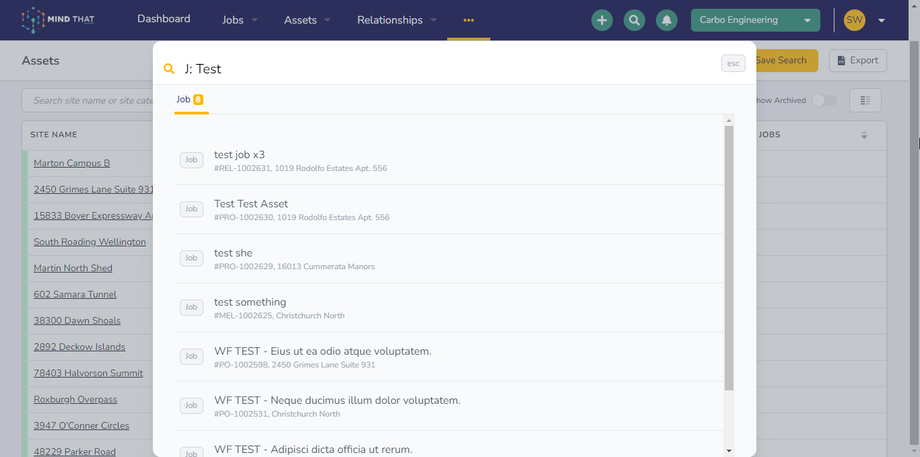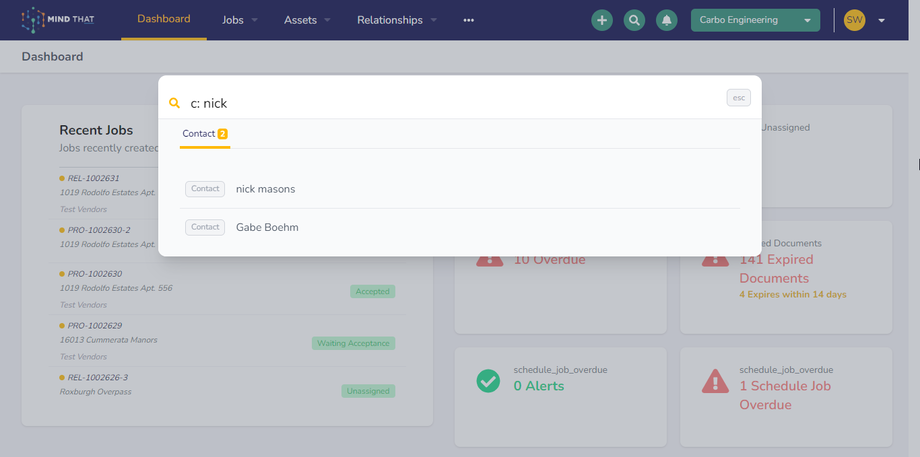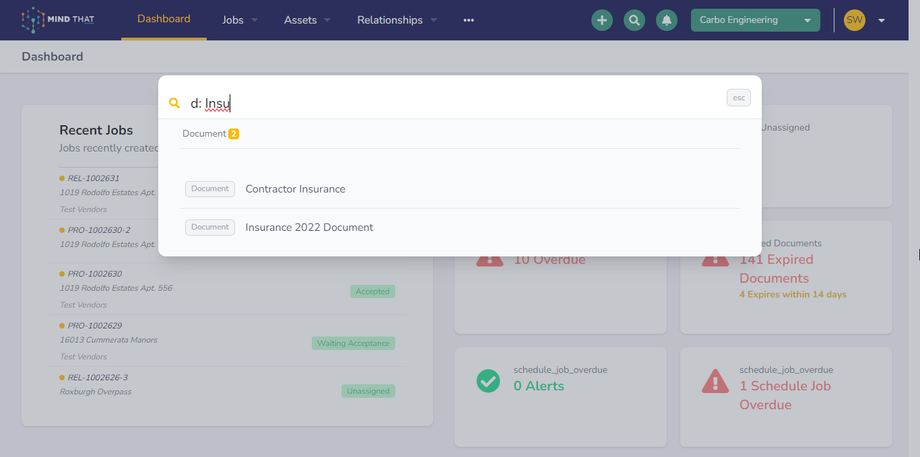How to Use Global Search
Mind That is a functional management tool to make workflows easier to manage and navigate. Whilst this is true, the amount of information and features in the app/website can be daunting and confusing for some.
This is where the Global Search feature comes in handy, making the website easier to navigate with just your keyboard. This tutorial will explore using the Global Search feature in Mind That. By mastering this feature, you can make the most of Mind That's functionality and streamline your workflow in ways you may not have thought possible.
Using Global Search
You can use the Global Search feature in the Mind That dashboard by (a) clicking on the Search Icon found on the Main Navigation bar beside the “+” Icon and the Bell notification.
However, you can use Global Search without clicking the icon or moving your mouse to the navigation bar. With keyboard commands, you can use Global Search no matter where you are on the system.
You can use the Ctrl + K keyboard shortcut for Microsoft Windows users, and the Search Box will appear. Mac users can use the ⌘ + K keyboard shortcut, and the Search Box will appear. (b) See the image above. As previously mentioned, you can use the Global Search feature anytime on any page you're on.
Using Search Bar Commands to Navigate Mind That
Search Function
The Global Search feature works like a conventional search bar, allowing you to search for everything in the app or website, especially record types like Jobs, Sites, Relationships, Documents and Qualifications.
This can be incredibly helpful if you're working on a large project with many moving parts or simply need to find information quickly without manually navigating menus and submenus.
To begin using the Search feature, (a) type your query in the text field. As you start typing, the Global Search feature will suggest possible matches based on your entered keyword.
You can also (b) see the different record types here as tabs for easier navigation and for finding files efficiently.
These keyword suggestions show the record type, such as (c) jobs in this example.
Using Search Query Commands
Using the Global Search like a regular search bar may not be overly fast or convenient, which may be a total waste of its features. To use it optimally, you can quickly pinpoint the record type and information you’re looking for by typing in a set of query commands.
Searching for Sites
To search for Sites using Global Search, you can type in “Sites” followed by a colon or by typing in the first letter followed by a colon. The query should look like site:[keyword] or s:[keyword]. See the above images for reference.
Searching for Jobs
To search for Jobs using Global Search, you can type in “Jobs” followed by a colon or by typing in the first letter followed by a colon. The query should look like jobs:[keyword] or j:[keyword]. See the above images for reference.
Searching for Vendors and Contacts
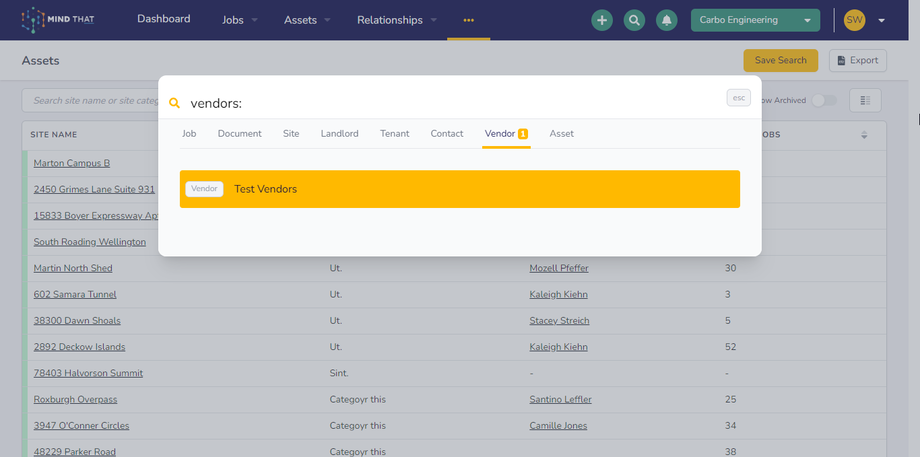
To search for Vendors using Global Search, you can type in “Vendors” followed by a colon or by typing in the first letter followed by a colon. The query should look like vendors:[keyword] or v:[keyword]. See the above images for reference.
To search for your Contacts using Global Search, you can type in “Contacts” followed by a colon or by typing in the first letter followed by a colon. The query should look like contacts:[keyword] or c:[keyword]. See the above images for reference.
Searching for Documents
To search for Documents using Global Search, you can type in “Documents” followed by a colon or by typing in the first letter followed by a colon. The query should look like documents:[keyword] or d:[keyword]. See the above images for reference.
Mind That also allows users to save their search filters using the Save Search feature. To learn how to use this feature, please read this article.


